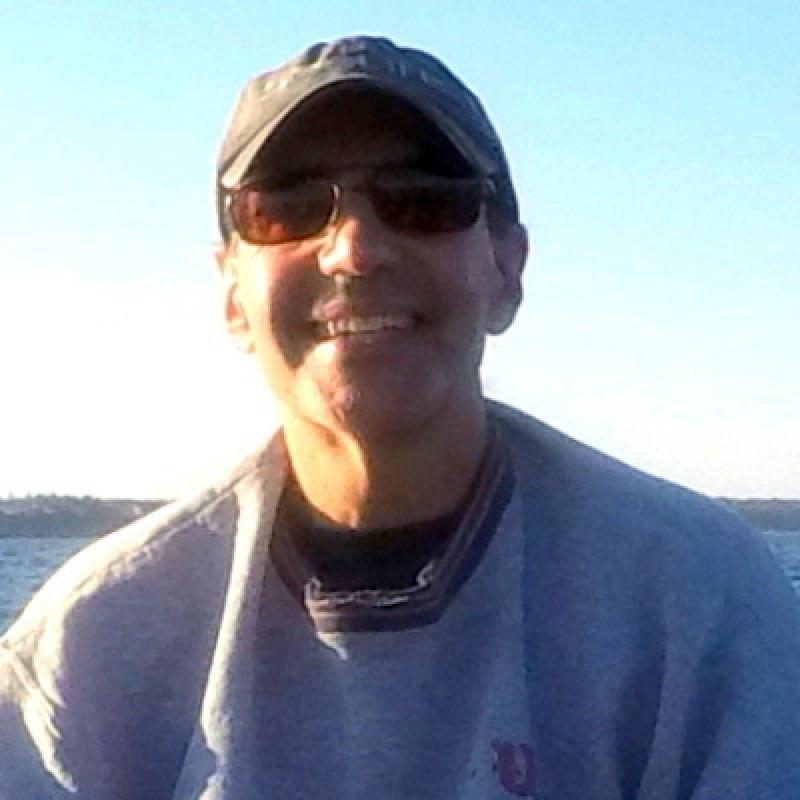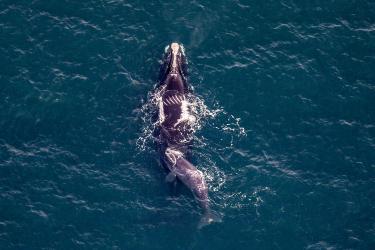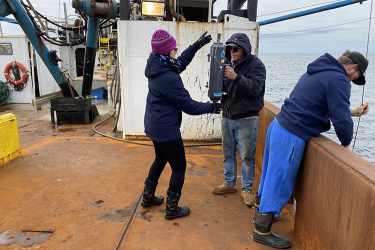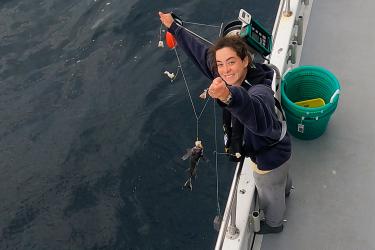We have completed our sampling on the Spring Ecosystem Monitoring Survey with our 106th station located just under 60 nautical miles east of Cape Cod.
Mission Accomplished
The cruise was very successful. We accomplished two objectives in addition to our primary monitoring protocols. The first was to sample ocean acidification stations in the Gulf of Maine. We did not sail last year because of the pandemic, and these stations have often been difficult to reach due to time constraints on previous surveys. On this cruise we only missed two of these stations: one in the northern Gulf of Maine and one in the central Gulf of Maine.
The second objective was to sample mackerel eggs and larvae in the western Gulf of Maine and Southern New England waters, the places they are likely to be this time of year. When storms were forecast for Georges Bank, we shifted the cruise track to the western Gulf of Maine. This allowed our ship, the NOAA Ship Gordon Gunter, to keep working. As a result we exceeded our planned coverage of the western Gulf of Maine, although we only partially sampled Georges Bank.
Busy Bird Observers
Our two seabird observers, Alison Black and Doug Gochfeld, spent many hours on the flying bridge of this vessel. They documented and photographed birds, both marine and terrestrial, as well as marine mammals spotted along our route. They have seen migrating land birds and a variety of seabirds, and even two south polar skua! They’ve spotted fin whales, humpback whales, common dolphins, and one North Atlantic right whale. Now, at the end of the trip, as the rest of us pack up our gear, they are still working and observing while we steam back.
Shrunken Cups Ready to Return
Our outreach effort has been completed. The styrofoam cups decorated by the elementary and middle school students from Banner Academy have been removed from the mesh bag where they’ve resided for the past two weeks. We’ve rinsed them with fresh water and air dried overnight. The now minuscule cups will be mailed to them upon our return as mementos of their project to demonstrate the powerful effects of water pressure at depth.
Snails and Slugs to Further Ocean Acidification Work
The work on collecting pteropods—free-swimming pelagic sea snails and sea slugs—has continued throughout the cruise. Betsy Broughton has been an avid “pteropod hunter.” She worked with Chris Taylor, who would grab simultaneous dissolved inorganic carbon (DIC) samples from our scientific seawater collection system to match with them. Tamara Holzwarth-Davis and Paula Fratantoni, both on the other watch, did the same. Together they collected 34 samples of pteropods with matching DIC data, which should be great data for this ocean acidification effects study.
Samples Rule
The number of samples collected from our regular ongoing monitoring work reveals the amount of effort the scientific staff has put into this survey:
- 102 bongo tows
- 25 water casts
- 60 chlorophyll samples
- 72 DIC samples
- 96 nutrient samples
All of our work occurred within the short two-week timespan of this cruise. Our accomplishments have all been made possible by the support we’ve received from the crew and command of this vessel. They’ve kept us safe, first of all, with their attention to Covid-19 protocols, masking, distancing, and daily spraying of all high-contact areas, like railings. Plus they kept our equipment functioning, our gear deployment going smoothly, and kept us fed and comfortable. All the while they’ve contributed photos, advice, and guidance throughout this trip, helping to make it as successful as it has been. Thank you all so much!
Jerry Prezioso, Chief Scientist
Aboard the NOAA Ship Gordon Gunter







